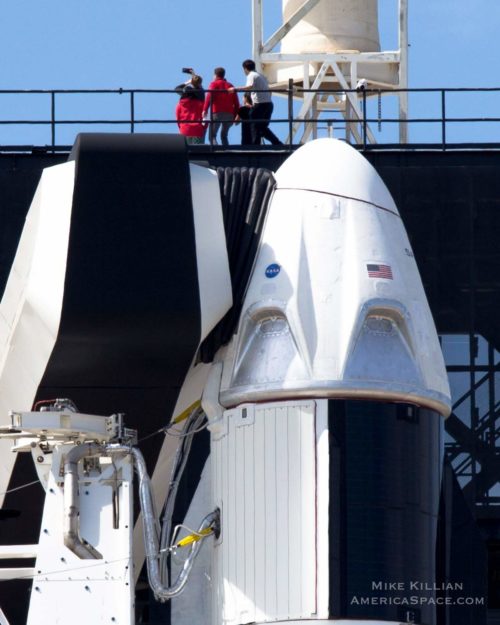
In a press release and media call yesterday (July 15, 2019), SpaceX revealed the findings thus far of their investigation into why a Crew Dragon test article exploded during test firing of its abort engines at Landing Zone-1 on Cape Canaveral Air Force Station in Florida back on April 20.
The investigation, led by SpaceX and in cooperation with NASA, the FAA, NTSB and U.S. Air Force, found that, “at approximately 100 milliseconds prior to ignition of Crew Dragon’s eight SuperDraco thrusters and during pressurization of the vehicle’s propulsion systems, evidence shows that a leaking component allowed liquid oxidizer – nitrogen tetroxide (NTO) – to enter high-pressure helium tubes during ground processing”, said SpaceX.
“A slug of this NTO was driven through a helium check valve at high speed during rapid initialization of the launch escape system, resulting in structural failure within the check valve. The failure of the titanium component in a high-pressure NTO environment was sufficient to cause ignition of the check valve and led to an explosion.”
The abort system is critical in that it is intended to safely launch a crew away from a failing rocket, whether on the launch pad or during launch itself. Crew Dragon employs eight SuperDraco thrusters for an abort emergency, which are paired up in pods of four around the spacecraft, with each engine providing a thrust of 16,000 pounds.
The prototype had just flown a very successful orbital flight test demonstration for NASA (Demo-1) to and from the International Space Station (ISS), and was intended to be flown again on an upcoming in-flight abort test, similar to what NASA just conducted with their Orion Crew Capsule, before it was destroyed in the explosion.

SpaceX says they have several Crew Dragons in various stages of production, and will now use the spacecraft which was intended for the first crewed mission (Demo-2) as the test vehicle for the in-flight abort test. While the spacecraft originally assigned to the first fully operational crewed mission for NASA (Crew-1) will instead now fly Demo-2.
“In order to understand the exact scenario, and characterize the flammability of the check valve’s titanium internal components and NTO, as well as other material used within the system, the accident investigation team performed a series of tests at SpaceX’s rocket development facility in McGregor, Texas”, says SpaceX. “Debris collected from the test site in Florida, which identified burning within the check valve, informed the tests in Texas. Additionally, the SuperDraco thrusters recovered from the test site remained intact, underscoring their reliability.”
“It is worth noting that the reaction between titanium and NTO at high pressure was not expected,” adds SpaceX. “Titanium has been used safely over many decades and on many spacecraft from all around the world. Even so, the static fire test and anomaly provided a wealth of data. Lessons learned from the test – and others in our comprehensive test campaign – will lead to further improvements in the safety and reliability of SpaceX’s flight vehicles.”

With an understanding now of what went wrong with such a critical system, which literally serves as the difference between life and death when needed, SpaceX has already initiated several actions to correct the problem moving forward, such as, “eliminating any flow path within the launch escape system for liquid propellant to enter the gaseous pressurization system”, says SpaceX. “Instead of check valves, which typically allow liquid to flow in only one direction, burst disks, which seal completely until opened by high pressure, will mitigate the risk entirely. Thorough testing and analysis of these mitigations has already begun in close coordination with NASA, and will be completed well in advance of future flights”.
SpaceX and NASA had hoped to see the first crewed test flight to and from the ISS (Demo-2) this summer, which will be flown by astronauts Bob Behnken and Doug Hurley, but with the testing setback that flight is not expected realistically now until early 2020.
You can read SpaceX’s full statement HERE
.
.
FOLLOW AmericaSpace on Facebook and Twitter!
.
.





